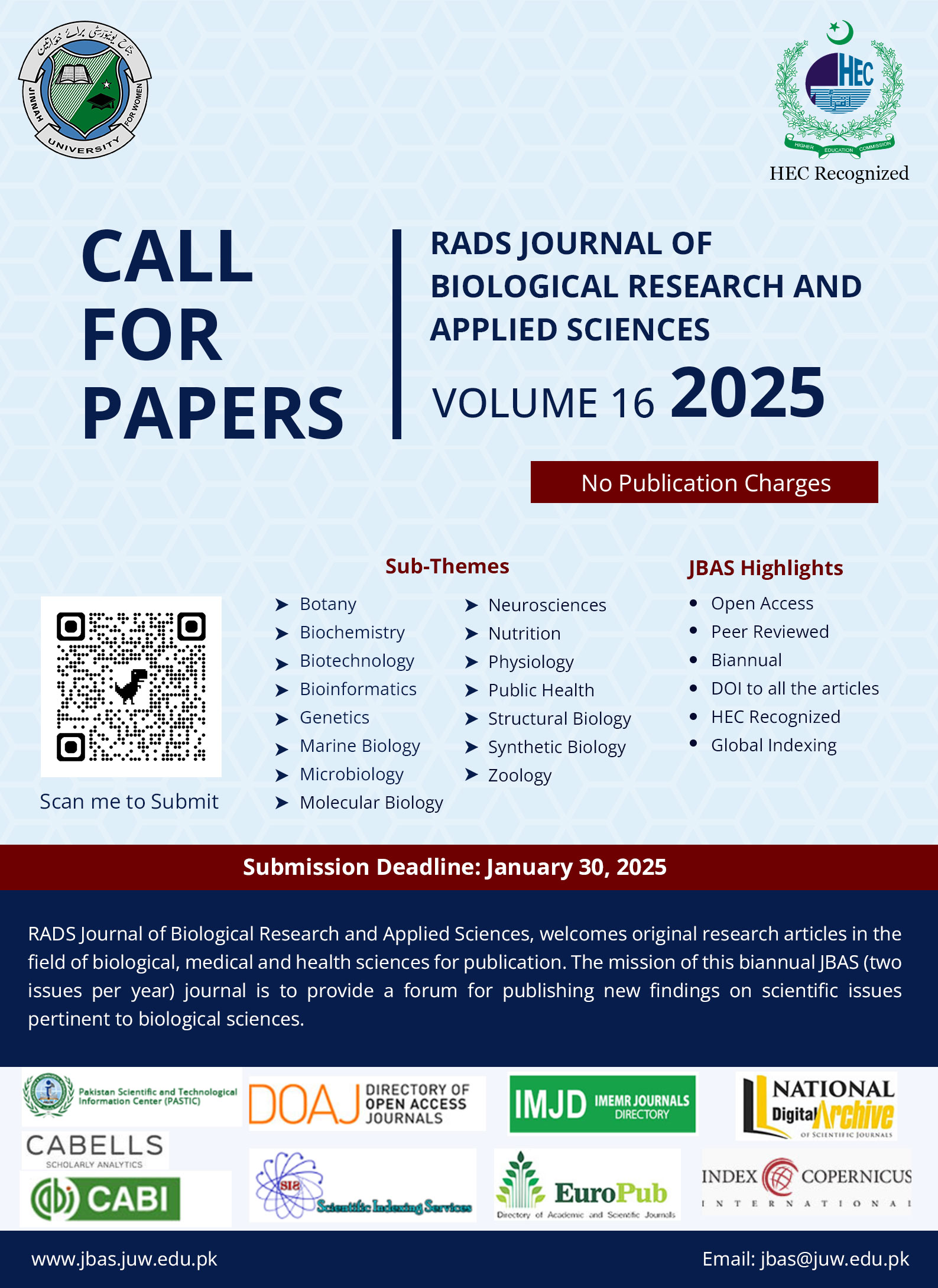Chemical Characterization of Treated and Rejected Wastewater of Reverse Osmosis Treatment Plants in the Area of Allama Iqbal Town, Lahore
DOI:
https://doi.org/10.37962/jbas.v13i1.432Keywords:
Biochemical Oxygen Demand, Chemical Oxygen Demand, heavy metals, pH, RO plant, Rejected Wastewater.Abstract
Background: Water is one of the most essential requirements of life. Life is not possible without water. Polluted water on the other hand can affect the health badly. Reverse Osmosis (RO) plants are used to remove dissolved solids including harmful and toxic materials from wastewater.
Objectives: To investigate the quality of 6 treated and rejected wastewater samples of RO plants water being consumed in the areas of College block, Hunza Block of Allama Iqbal Town, and Gulberg III Lahore, Pakistan.
Methodology: Both qualitative and quantitative analyses were done by using the parameters like Chemical Oxygen Demand (COD), Biological Oxygen Demand (BOD), Total Dissolved Solids (TDS), Cl-, pH, nitrate, nitrite, SO42-, Na+, K+ and heavy metals like Cr3+, Fe3+, Cu2+, Zn2+ and Mn2+ through Flame emission spectroscopy, UV-Vis spectroscopy, Atomic absorption spectroscopy, and volumetric analysis.
Results: The sample analysis indicated that these parameters lie within the permissible limits with reference to National Environmental Quality Standards (NEQS) values with some exceptions. The pH of treated water of college block (sample A) was 9.219, which is slightly higher than normal pH value, which is between 6.5-8.5. The value of Cr3+ ion in rejected water of Gulberg III was 0.06ppm, which is also higher than the normal limit.
Conclusion: All the parameters of treated and rejected wastewater indicated the suitability of water samples for population of respective areas, but the values of rejected wastewater are towards an increase, and should therefore be treated before dumping.


















